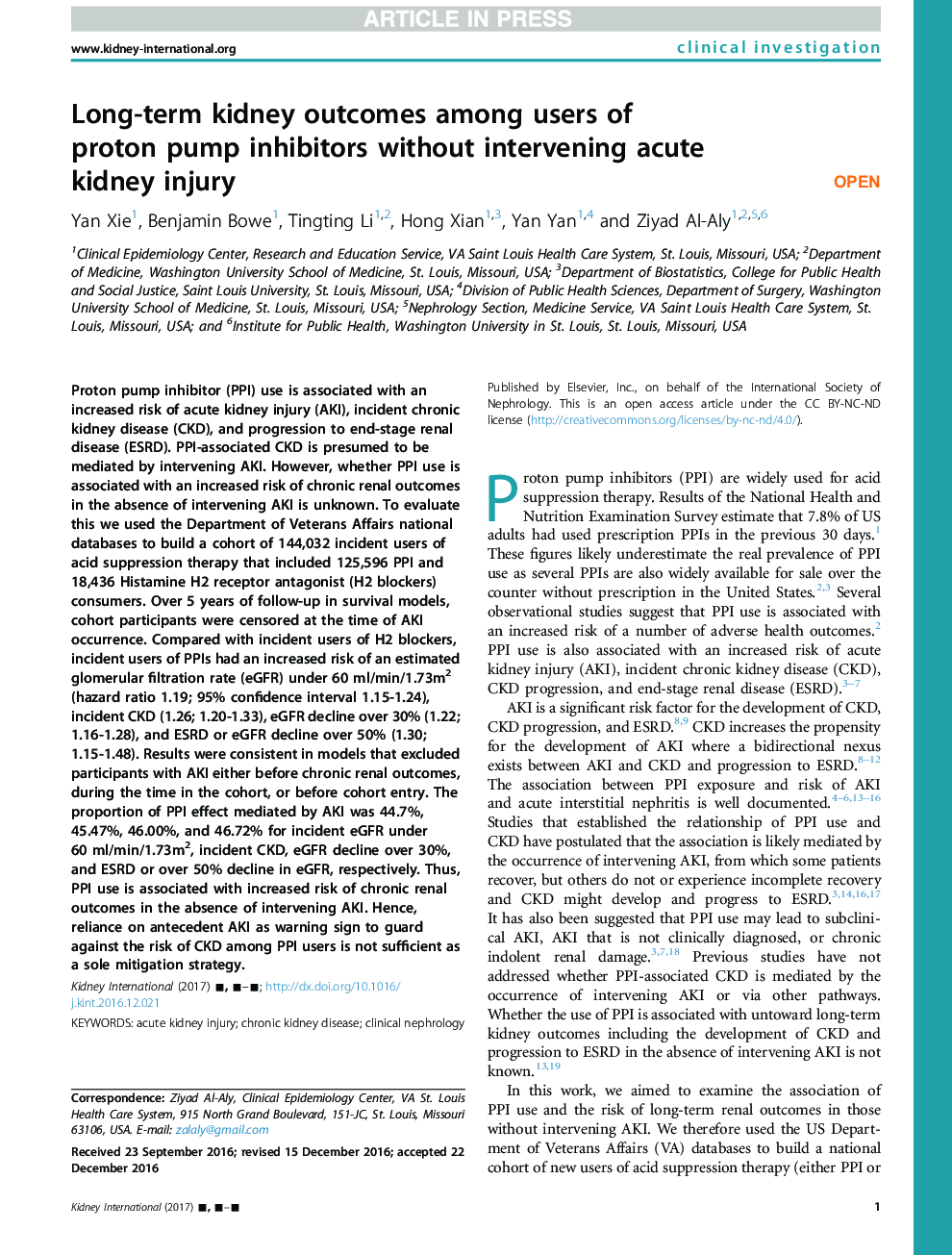| Article ID | Journal | Published Year | Pages | File Type |
|---|---|---|---|---|
| 5688304 | Kidney International | 2017 | 13 Pages |
Abstract
Proton pump inhibitor (PPI) use is associated with an increased risk of acute kidney injury (AKI), incident chronic kidney disease (CKD), and progression to end-stage renal disease (ESRD). PPI-associated CKD is presumed to be mediated by intervening AKI. However, whether PPI use is associated with an increased risk of chronic renal outcomes in the absence of intervening AKI is unknown. To evaluate this we used the Department of Veterans Affairs national databases to build a cohort of 144,032 incident users of acid suppression therapy that included 125,596 PPI and 18,436 Histamine H2 receptor antagonist (H2 blockers) consumers. Over 5 years of follow-up in survival models, cohort participants were censored at the time of AKI occurrence. Compared with incident users of H2 blockers, incident users of PPIs had an increased risk of an estimated glomerular filtration rate (eGFR) under 60 ml/min/1.73m2 (hazard ratio 1.19; 95% confidence interval 1.15-1.24), incident CKD (1.26; 1.20-1.33), eGFR decline over 30% (1.22; 1.16-1.28), and ESRD or eGFR decline over 50% (1.30; 1.15-1.48). Results were consistent in models that excluded participants with AKI either before chronic renal outcomes, during the time in the cohort, or before cohort entry. The proportion of PPI effect mediated by AKI was 44.7%, 45.47%, 46.00%, and 46.72% for incident eGFR under 60Â ml/min/1.73m2, incident CKD, eGFR decline over 30%, and ESRD or over 50% decline in eGFR, respectively. Thus, PPI use is associated with increased risk of chronic renal outcomes in the absence of intervening AKI. Hence, reliance on antecedent AKI as warning sign to guard against the risk of CKD among PPI users is not sufficient as a sole mitigation strategy.
Related Topics
Health Sciences
Medicine and Dentistry
Nephrology
Authors
Yan Xie, Benjamin Bowe, Tingting Li, Hong Xian, Yan Yan, Ziyad Al-Aly,
